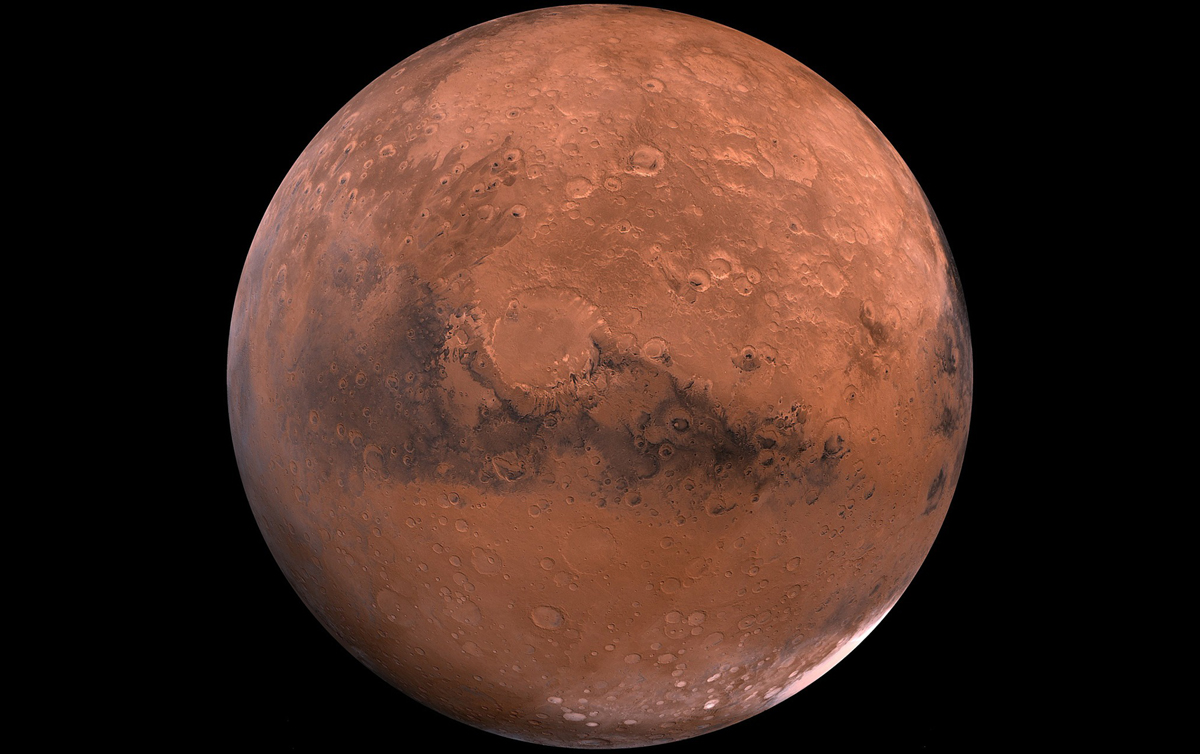
Life on Earth and Mars: Exactly the same, but different
For quite a long time, we Earthlings have been fascinated with our planetary neighbor, the distinctive red planet Mars. This is the first in a series of articles describing details of Mars from geological and biological perspectives based on evidence collected and published by NASA and other space agencies since the mid-1960s.
Human interest in Mars and Martians
Mars was named after the ancient Roman god of war, but very little was known of the actual planet. Jumping ahead a couple of millennia, the invention and initial use of a telescope by Galileo Galilei in the early 1600s provided some ideas about the planet. Galilei also documented the fact that the sun is at the center of our solar system, and all planets and their satellites rotate around it. This is known as heliocentrism.
In the late 1800s, relatively low-resolution telescope images suggested to some astronomers that Mars had “geometric canals on its surface,” and those astronomers thereby inferred that intelligent life existed on the planet. Perhaps feeding on that controversial and possibly scary idea, the prolific British writer H. G. Wells published his science fiction novel “The War of The Worlds” in 1898. In his novel, Earth is invaded by technologically advanced Martians, but they fortuitously die off by earthly pathogens to which they have no resistance (Figure 1).

Fast forward to 1938. Wells is still alive; however, the development of telescopes with better resolution provides no evidence of canals on the surface of Mars. But the idea of invading Martians was still alive.
Another Wells, this one named Orson Welles, adapted “War of the Worlds” as a radio show that was broadcast on Halloween eve in 1938. This broadcast, which was presented as a breaking news drama on Mercury Radio Theater, reportedly caused a panic in parts of the United States (Figure 2).

Take another jump in time to the 1960s. The “space race” to be the first country to land humans on the moon was in full bloom. Also, beginning with the first Mars flybys (Mariner 4 in 1964), NASA was exploring the red planet using a variety of techniques. Beginning in the 1990s, various Mars landers, the rovers, have explored small portions of the planet’s surface, taking pictures and analyzing rocks and other features (Figure 3).

Origin of Earth and Mars: Our solar system
Various hypotheses for the formation of our solar system have been proposed. The current most likely model was first proposed over 100 years ago and has undergone revisions continuing to the present time. Our planet is one of the four inner terrestrial planets, including Mercury, Venus, and Mars. These inner planets have a much higher density than the outer planets, a result of lighter gasses being blown off early in the formation of the solar system when the sun was larger (Figure 4).
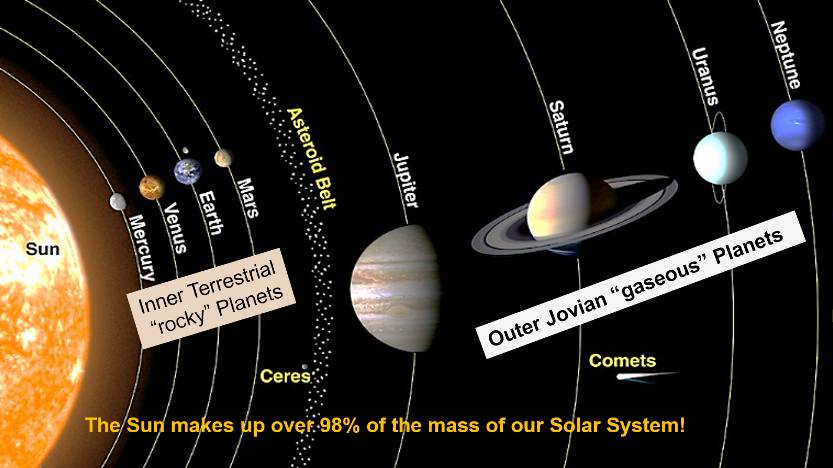
The approximate timing of origin events for our solar system is known from radiometric dating of moon rocks and from meteorites that have been found on Earth. The oldest of these rocks are currently known to be about 4.55 billion years old. This date, therefore, provides evidence that various objects within the solar system had formed and solidified by that time.
The technique of radiometric dating was first applied to rocks early in the 1900s by Ernest Rutherford and Bertram Boltwood, who measured decay ratios of uranium to lead. With the development of more accurate machines since the 1950s, such dating has consistently proven to be a reliable, repeatable, and accurate technique.
Astronomers have recently recognized what is termed a “habitable zone” for any solar system. In a solar system, the location and extent of this habitable zone is based on the size and type of a particular star, characteristics of existing planets, and the distance away from that star where such planets may exist. This zone is considered to represent where conditions suitable for our type of carbon-based life might exist. Earth and Mars both occur within the habitable zone of our solar system. (Figure 5).
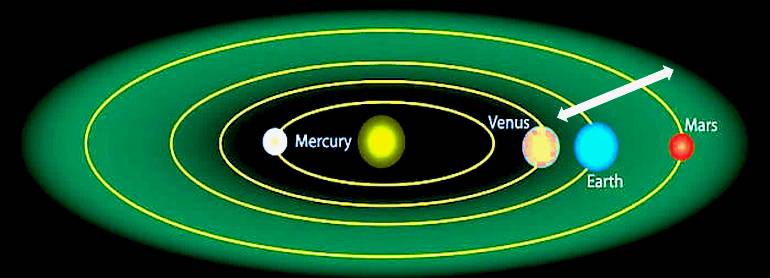
Geologic history of ancient Earth
Attempting to understand and interpret a history of Mars first requires an understanding of the early history of Earth. Although our planet formed along with the rest of the solar system over 4.5 billion years ago, very little remains of Earth’s earliest history. Because Earth is a dynamic planet, virtually all of the rocks and other features older than about 3.8 billion years have pretty much been recycled and destroyed. This lack of a record is the result of energy continuously interacting on the surface (Figure 6).
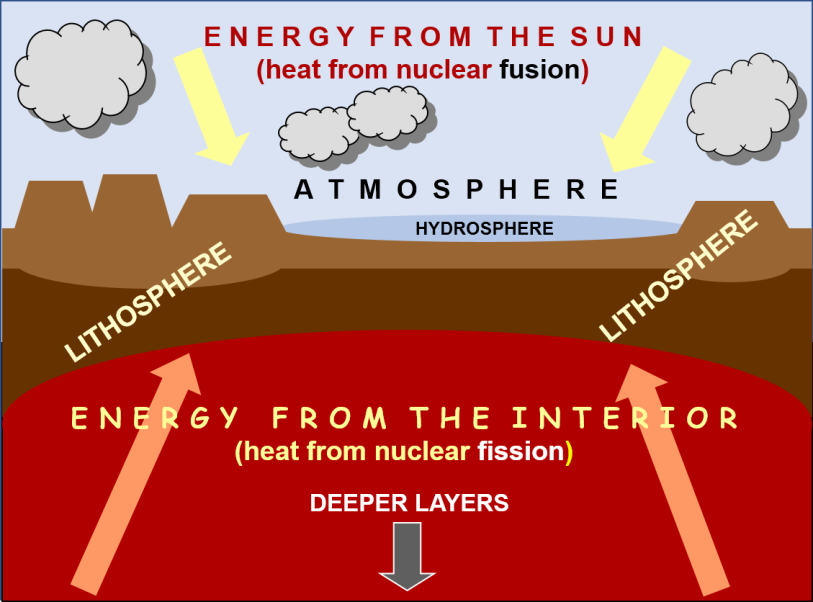
Earth can be visualized as being layered somewhat like an onion. These layers are generally described as spheres such as our atmosphere, hydrosphere, an outer rocky lithosphere, and other layers extending down into the central core (Figure 7). These spheres formed during and slightly after the planet condensed, went through a molten state, and then cooled. It has also been recognized that there is feedback among the spheres. A significant change in one sphere may cause a change in another sphere. (There is no supporting evidence that the interior of the Earth is hollow or that the entire planet is flat.)
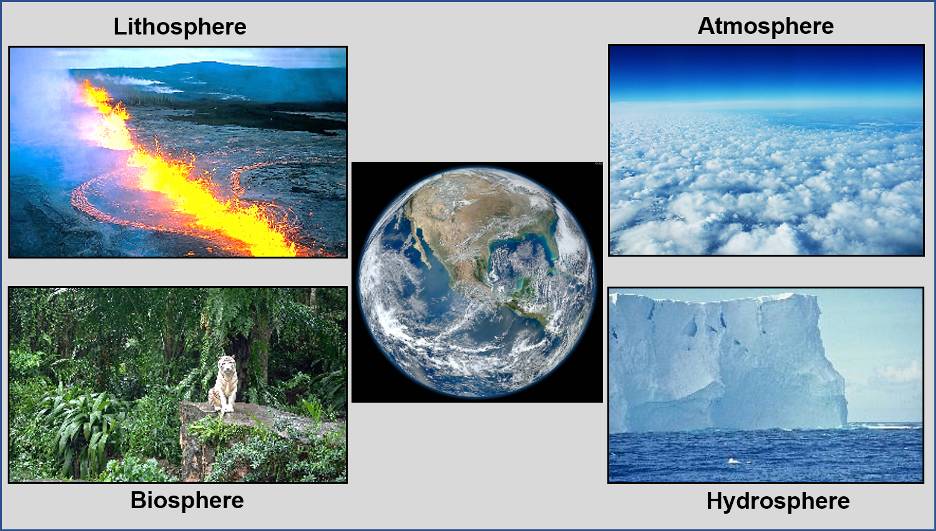
Interactions among the various spheres are described by a variety of what are termed cycles. Some of these include the tectonic cycle, which describes plate tectonic activity; the rock cycle, which describes main groups of rocks and the processes that act upon them (Figure 8); and the hydrologic cycle, which describes the movement of water (Figure 9). These cycles indicate how dynamic Earth has been throughout most of its history.
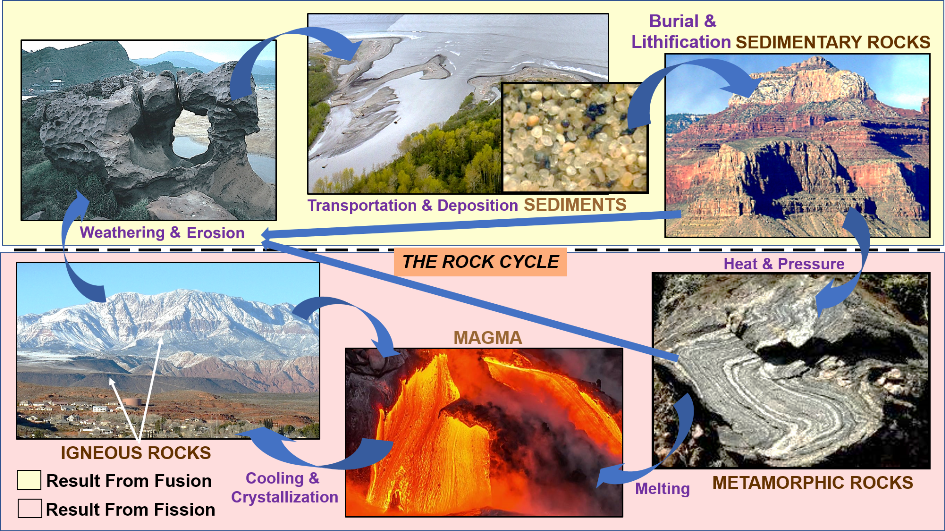
A look at the rock cycle images in Figure 8 indicates that representatives of the three groups of rocks and sediments can all be found in the southern Utah/northern Arizona region. Basalt lava flows and Pine Valley Mountain rocks represent extrusive and intrusive igneous rocks with the Pine Valley Mountain rocks having been subsequently exposed by erosion. Sediments can be seen in many areas in and around St. George. Sedimentary rocks are from the Grand Canyon, and similar rocks can be seen in the Virgin River Gorge. Metamorphic rock sample is from the Beaver Dam Mountains and represents a 1.8-billion-year-old rock, which can also be seen exposed in the inner gorge of the Grand Canyon. Also note that molten liquid ”magma” only occurs below the Earth’s surface, so this image is actually of a molten lava flow during a volcanic eruption.
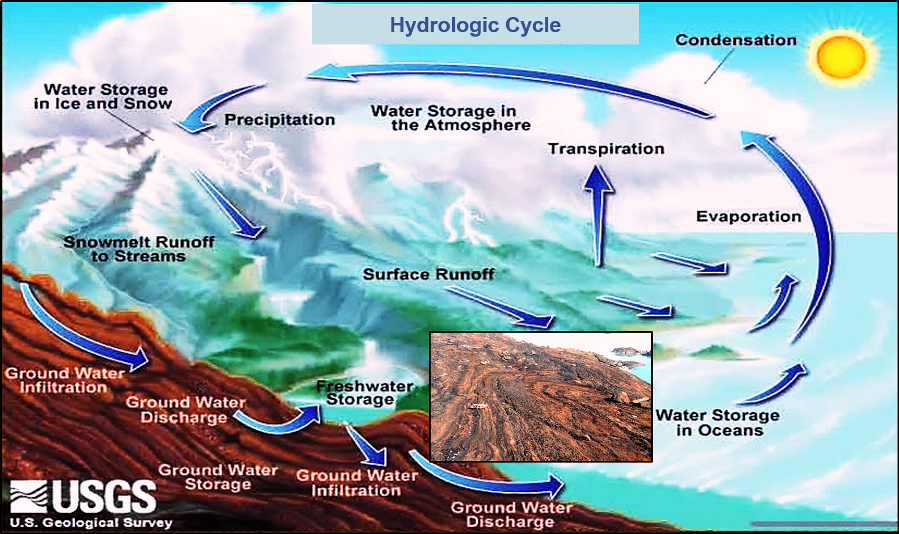
Since the mid-1950s, many new discoveries have provided a reasonably detailed picture of the early history of our planet. Unfortunately, the further back in time we go, the preserved record becomes rarer. Because physical conditions were also significantly different then they are today, it becomes more difficult to interpret the record that does remain. Nonetheless, currently available evidence has allowed Earth scientists to compile a reasonably detailed early history of Earth (Figure 10). This historical record provides a useful tool for interpretation of evidence being collected from Mars.
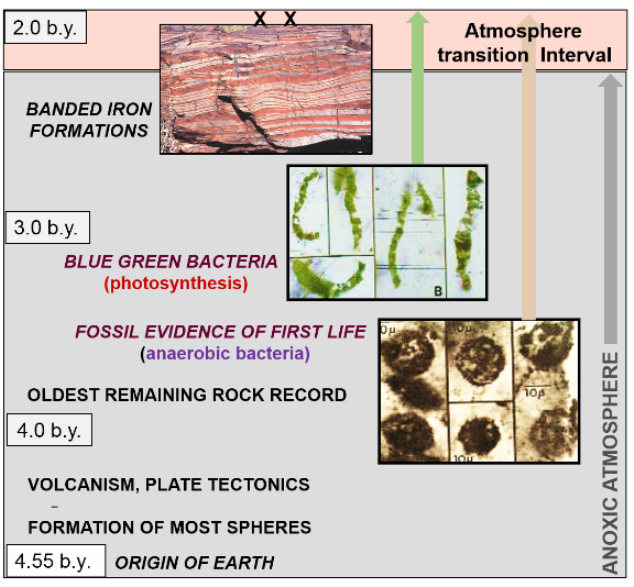
The next article will describe how and when life appeared on Earth along with an interpretation the ancient environmental conditions that existed early in our planet’s history.



